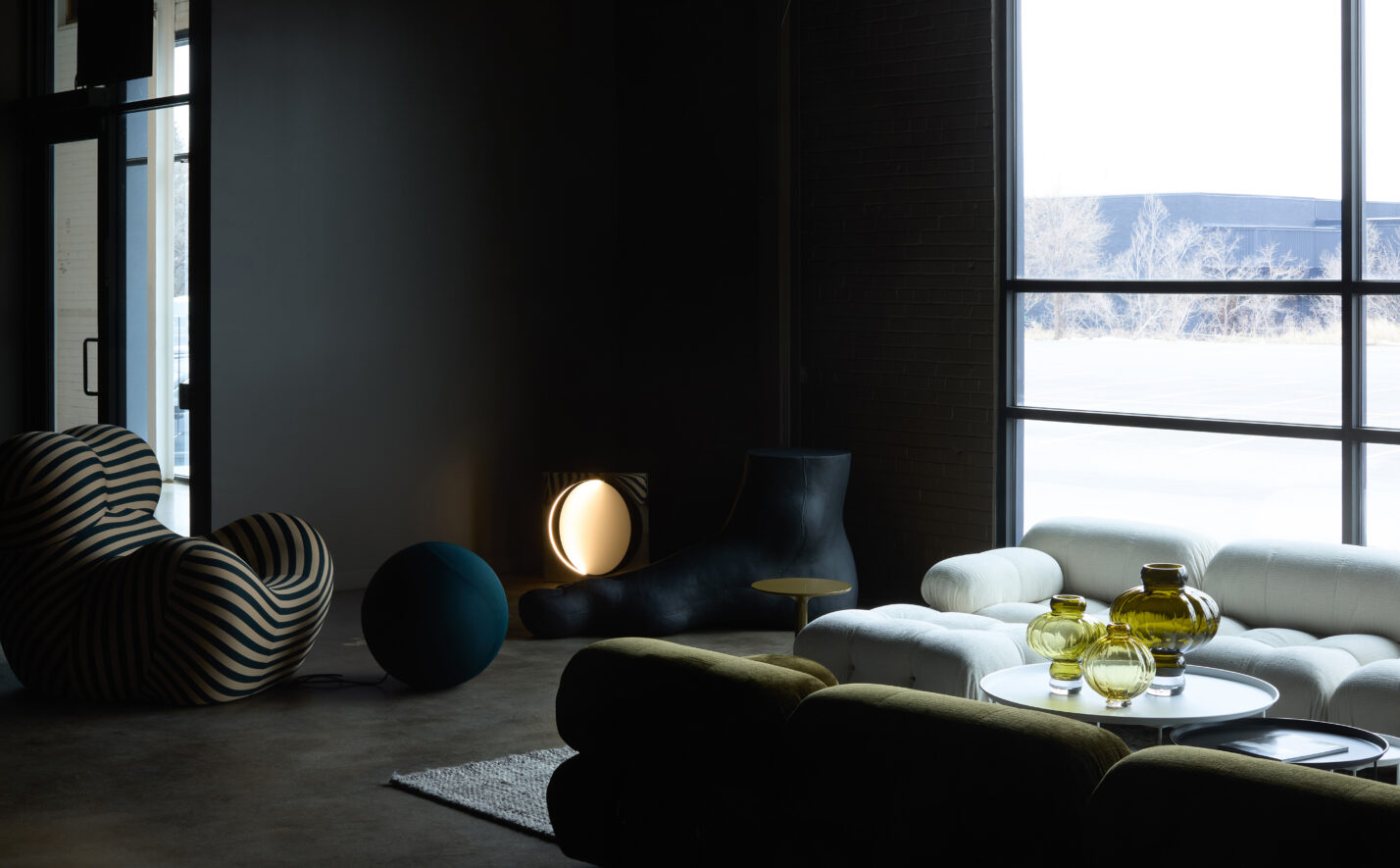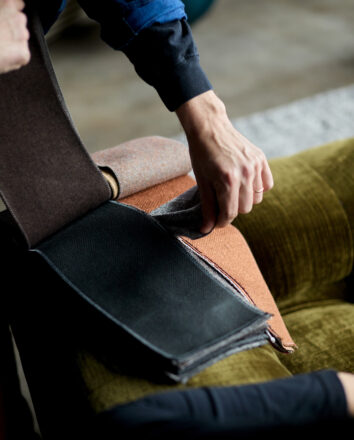B&B Italia's
Icons of Design
Pushing design forward with Toronto's first B&B Italia showroom
In celebration of the new B&B Italia and Maxalto showroom in partnership with Elte, we are reflecting on some of B&B Italia’s most iconic pieces and their presence within the newly opened space.
An immersion into luxury and craftsmanship, the space showcases both B&B Italia and Maxalto’s collections.
The expansive space reflects the vision of Piero Lissoni, B&B Italia’s Artistic Director, whose visionary concept for the flagship sets the highest standards in retail experiences.
1. Husk
The Husk Chair designed by Patricia Urquiola in 2011 is a tribute to softness and an invitation to relax thanks to the generous extra soft cushions with a capitonné design.
The hard shell is made from a plastic material consisting of recycled and recyclable polymers.
2. Tobi-Ishi
Inspired by ornamental stones used in Japanese gardens, the Tobi-Ishi table was designed in 2012 by British design duo Edward Barber and Jay Osgerby. The limited edition 10th anniversary table features strips of white carrara and green alpi marble.
The Tobi-Ishi table has become an icon of international design. In all its variations, it retains the strongly sculptural feel defined by the three elements that compose it.
3. Up 50
Designed by Gaetano Pesce in 1969, the Up Chair is a global icon of Italian furniture design. Symbolizing femininity and protest against discrimination, the chair mimics the female form while its attached ottoman represents the notion of the ball and chain.
The beige/petrol green striped fabric is based on the original colour palette, offered in celebration of the fiftieth anniversary of the Up series.
4. Le Bambole
The Bambole Armchair is part of Le Bambole series, originally designed in 1972 by Mario Bellini. With its apparent absence of a load bearing structure and extreme naturalness of shape, the design offers a combination of comfort, softness and elasticity.
5. Camaleonda
Camaleonda translates to chameleon, coined by its designer, Mario Bellini. As living rooms of the 1970s were becoming less formal and more casual, a product like this was designed to adapt in any space.
The arms and seatbacks are removable, meaning it can repositioned and adapted to new rooms and homes.










